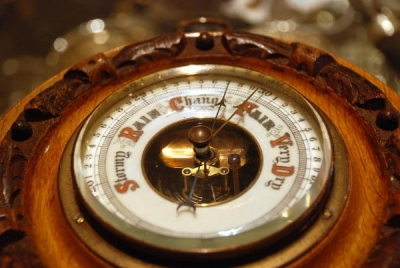
Even air has weight and, like any solid object, it presses down on the surface of the Earth. Scientists decided to measure the amount of his pressure and the Italian Galileo was the first to succeed. He used a very long tube, closed at one end, which he filled with water and then placed the open end in a receptacle full of water. The water in the tube fell, stopping at a height of 10 meters. A few years later, in 1643, a pupil of Galileo named Evangelista Torricelli carried out further experiments using a heavier liquid than water; mercury. The mercury rose inside its tube, closed at one end, which he filled with water and then placed the open end in a receptacle full of water. The water in the tube fell, stopping at a height of 10 metres. A few years later, in 1643, a pupil of Galileo named Evangelista Torricelli carried out further experiments using a heavier liquid than water: mercury. The apparatus was given the name barometer from, the Greek baros meaning ‘weight’ and metron meaning ‘measure’. Torricelli soon noticed that the height of the mercury column varied with changes in air pressure. About 1647 Blaise Pascal’s experiments finally convinced people of the correctness of Torricelli’s ideas.
The most modern form of this instrument is the aneroid barometer, from Greek a meaning ‘without’ and neros meaning ‘liquid’. The aneroid barometer consists of a small steel box which contains a vacuum. The pressure of the air outside the box can cause the surface of the box to move in or out. A needle on the dial records the movements of the box along a graduated scale to show the changes in air pressure.
This type of barometer is smaller and more portable than a mercury barometer but it is not quite as accurate. It has first to be calibrated or set to a mercury barometer before it can be used.
Picture Credit : Google

